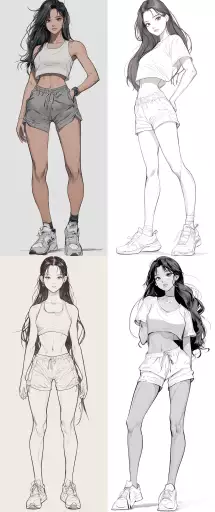Explore the Best AI Image Gallery

AI: The Algorithm and the Artist - Reshaping Graphic Design
The world of graphic design is undergoing a profound transformation, driven by the rapid advancements in artificial intelligence (AI). No longer confined to the realms of science fiction, AI is now a tangible force, reshaping creative workflows, democratizing design tools, and pushing the boundaries of artistic expression. This blog post delves into the multifaceted impact of AI on graphic design, exploring its applications, ethical considerations, and future trajectory.
AI-Powered Design Tools: A New Creative Frontier
AI-powered design tools are emerging as game-changers, offering designers a range of capabilities that were once unimaginable. These tools leverage machine learning algorithms to automate repetitive tasks, generate creative concepts, and personalize designs based on user preferences.
- Logo Generation: AI can analyze brand guidelines and create multiple logo options tailored to specific requirements.
- Image Editing: AI-powered tools can enhance images, remove backgrounds, and even generate realistic composite imagery.
- Typography Design: AI algorithms can suggest font pairings, optimize text layout, and even generate custom typeface designs.
Democratizing Design: Accessibility for All
One of the most significant impacts of AI in graphic design is its potential to democratize access to creative tools. With user-friendly interfaces and intuitive workflows, AI-powered design platforms can empower individuals without formal design training to create professional-quality visuals.
This opens up new opportunities for small businesses, entrepreneurs, and individuals to express their creativity and bring their ideas to life without relying on expensive agencies or designers.
Ethical Considerations: Navigating the AI Landscape
As with any powerful technology, the integration of AI into graphic design raises ethical considerations that need careful attention:
- Bias and Fairness: AI algorithms are trained on vast datasets, which can inadvertently perpetuate existing biases. Its crucial to ensure that AI-powered design tools generate inclusive and representative visuals.
- Copyright and Intellectual Property: The ownership of designs generated by AI raises complex legal questions. Establishing clear guidelines and frameworks is essential to protect the rights of both creators and users.
- Transparency and Explainability: Understanding how AI algorithms arrive at design decisions is crucial for building trust and accountability.
Future Trends: The Evolution of AI-Driven Design
The future of AI in graphic design holds immense promise, with continuous advancements pushing the boundaries of creativity:
- Generative Design: AI will increasingly be used to generate entirely new design concepts, exploring innovative solutions and expanding creative possibilities.
- Personalized Design Experiences: AI will enable highly personalized design experiences, tailoring visuals to individual preferences and contexts.
- AI-Human Collaboration: The future of design lies in a collaborative partnership between humans and AI, leveraging the strengths of both to create truly groundbreaking work.
Conclusion
AI is undeniably reshaping the landscape of graphic design, offering exciting opportunities for creativity, efficiency, and accessibility. As we navigate this evolving terrain, its crucial to embrace ethical considerations, foster transparency, and prioritize human-centered design principles. By harnessing the power of AI responsibly, we can unlock a future where creativity knows no bounds.